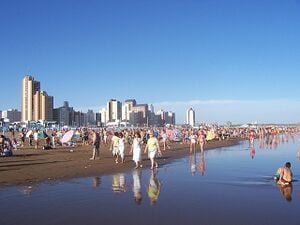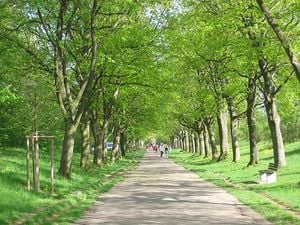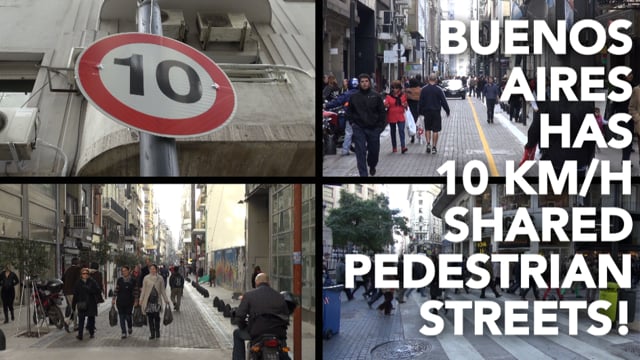The aim of this page is to recognise, celebrate and encourage the self-empowerment of community agency networks (CANs) and community groups across Argentina.

 Women fight back as Milei’s government tries to starve their soup kitchens, opendemocracy.net (Apr 03, 2024)
Women fight back as Milei’s government tries to starve their soup kitchens, opendemocracy.net (Apr 03, 2024)  ‘We are in an era of megafires’: new tactics demanded as wildfires intensify across South America, theguardian.com (Feb 13, 2024)
‘We are in an era of megafires’: new tactics demanded as wildfires intensify across South America, theguardian.com (Feb 13, 2024)
Networks, sustainability initiatives and community involvement[edit | edit source]
- Neighbourhood initiatives across Buenos Aires
Popular assemblies[edit | edit source]
During the Argentine economic crisis (1999–2002) many Argentinian citizens started engaging and organising their actions through assemblies.
After closure, the Chilvert printing press was occupied by workers who organised through an assembly. Within weeks of being reopened as a workers cooperative Chilvert printed a book called Que son las Asembleas Populares? or What are the Popular Assemblies?, a collection of articles written by renowned intellectuals Miguel Bonasso, Stella Calloni and Rafael Bielsa as well as workers and participants in the assemblies.
As with other workplaces, the print factory was saved from closure by the actions of a popular assembly. The military and police were blocked from entering the factory after the popular assembly of Pompeya called on barrio residents to protect the workplace. Individual police officers expressed their support for the workers and the popular assembly and successfully petitioned the judge to rescind his order to seize the factory.
The assemblies movement is reported to have spiked in power rapidly and fallen from any major significance within months. It is reported that Grigera summing up his analysis of the asambleas states
'no matter how progressive or 'advanced' the social relationships, forms of decision-making and activities of asambleas are said to be, their small scale, lack of influence and flawed coordination between themselves and other movements render this movement unable to overcome very narrow limitations.' W
Food activism[edit | edit source]

This article is an offshoot from Argentina community action.
 Women fight back as Milei’s government tries to starve their soup kitchens, opendemocracy.net (Apr 03, 2024)
Women fight back as Milei’s government tries to starve their soup kitchens, opendemocracy.net (Apr 03, 2024)
- Urban Agriculture Rosario, added 16:26, 13 October 2021 (UTC)
- Sustainable Food Production for a Resilient Rosario, prizeforcities.org
- Urban agriculture, rosario.gob.ar
Ethical consumerism[edit | edit source]
Buy Nothing Day: Dia sin compra
La Enciclopedia Fashion Revolution es una iniciativa de Fashion Revolution Argentina apoyada por Fashion Revolution y Appropedia. Estamos creando un compendio de artículos, tutoriales e iniciativas ciudadanas para una industria de la moda más sustentable. Te invitamos a contribuir en la creación de contenido que permita enseñar a otras personas a reconocer el origen de su ropa, cómo adquirir prácticas sustentables de compra y reparación, y a organizarse localmente por una moda más equitativa y justa para las personas que trabajan en la insdustria y el ambiente.
Sustainable transport activism[edit | edit source]
2014 Sustainable Transport Award Finalist: Buenos Aires, Argentina itdp.org
Cycling activism[edit | edit source]
Ciclovía: Rosario was the first city in Argentina to hold an official Ciclovia, called Calle Recreativa. Each Sunday and holiday few important avenues of Rosario, are blocked off for the event to become carfree. From 8 am to 1 pm, runners, skaters and bicyclists take over the streets. Rosario's weekly ciclovías are used by approximately 30.000 thousand people on over 13 km of carfree streets. Buenos Aires started its Ciclovías network in 2009, and as of 2013 it covers more than 100 km and continues expanding. W
Open spaces[edit | edit source]
Currently, there are 41 protected areas in Argentina,[2] which cover an area of 37,000 km2 (14,286 sq mi) or about 1.5% of the total land area in Argentina. W
The National Parks of Argentina make up a network of 35 national parks in Argentina. The parks cover a very varied set of terrains and biotopes, from Baritú National Park on the northern border with Bolivia to Tierra del Fuego National Park in the far south of the continent. The Administración de Parques Nacionales (National Parks Administration) is the agency that preserves and manages these national parks along with Natural monuments and National Reserves within the country.
The headquarters of the National Parks Service are in downtown Buenos Aires, on Santa Fe Avenue. A library and information centre are open to the public. The administration also covers the national monuments, such as the Jaramillo Petrified Forest, and natural and educational reserves.
Research[edit | edit source]
- Frack-Off: Social Media Fights Against Fracking in Argentina, tandfonline.com, 25 Feb 2021
Environmental issues[edit | edit source]
The largest oil spill in fresh water was caused by a Shell Petroleum tanker in the Río de la Plata, off Magdalena, on January 15, 1999, polluting the environment, drinking water, and local wildlife.
The major environmental issues in Argentina are pollution and the loss of agricultural lands. The soil is threatened by erosion, salinization, and deforestation. Air pollution is also a problem due to chemical agents from industrial sources. The water supply is threatened by uncontrolled dumping of pesticides, hydrocarbons, and heavy metals. Argentina has a renewable water supply of 276 cubic km. In 2002, some 97% of all city dwellers and over 70% of rural dwellers had access to improved water sources. In 2000, about 12.7% of the land area contained forest and woodland.
According to a 2006 report issued by the International Union for Conservation of Nature and Natural Resources (IUCN), threatened species included 32 types of mammals, 55 species of birds, 5 types of reptiles, 30 species of amphibian, 12 species of fish, and 42 species of plants. Endangered species in Argentina include the ruddy-headed goose, Argentinean pampas deer, South Andean huemul, puna rhea, tundra peregrine falcon, black-fronted piping guan, glaucous macaw, spectacled caiman, the broad-nosed caiman, Lear's macaw, the guayaquil great green macaw, and the American crocodile. W
Near you[edit | edit source]
About Argentina[edit | edit source]
Argentina, officially the Argentine Republic, is a country in the southern half of South America. Argentina covers an area of 2,780,400 km2 (1,073,500 sq mi), making it the second-largest country in South America after Brazil, the fourth-largest country in the Americas, and the eighth-largest country in the world. It shares the bulk of the Southern Cone with Chile to the west, and is also bordered by Bolivia and Paraguay to the north, Brazil to the northeast, Uruguay and the South Atlantic Ocean to the east, and the Drake Passage to the south. Argentina is a federal state subdivided into twenty-three provinces, and one autonomous city, which is the federal capital and largest city of the nation, Buenos Aires. The provinces and the capital have their own constitutions, but exist under a federal system. Argentina claims sovereignty over the Falkland Islands, South Georgia and the South Sandwich Islands, the Southern Patagonian Ice Field, and a part of Antarctica.




